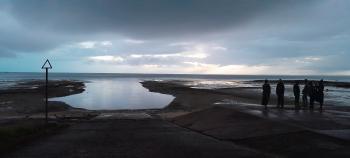Fear Drive My Feet

Though only a handful of us were gathered at Milingimbi on ANZAC Day, the full reality hits home: more than 30 million soldiers and civilians were killed in the Pacific theater during WWII, compared with 15 million to 20 million killed in Europe.
Fear Drive My Feet
Working Papers, 9, 2023.
$1.00


